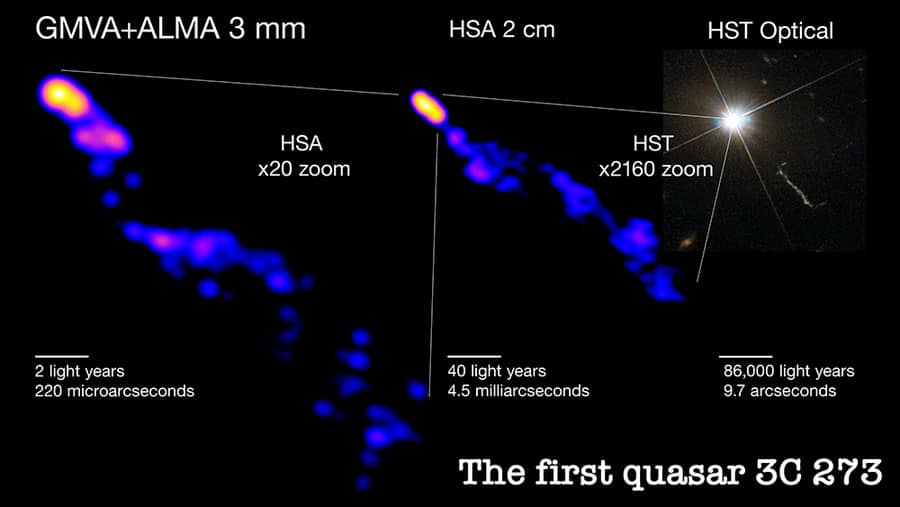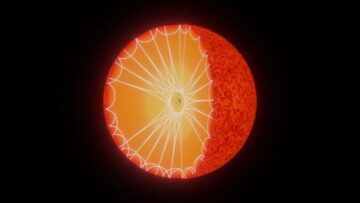Quasars, or quasi-stellar objects, are one of the brightest and most active types of supermassive black holes that feed on gas at the center of a distant galaxy. 3C 273 is the first quasar ever to be identified. It is located in the constellation of Virgo.
An international group of scientists has published new observations of the 3C 273. They observed the innermost, deepest parts of the quasar’s prominent plasma jet. It also includes observations of the 3C 273 jet at the highest angular resolution to date, obtaining data for the innermost portion of the jet, close to the central black hole.
A global network of radio antennas, including the Global Millimeter VLBI Array (GMVA) and the Atacama Large Millimeter/submillimeter Array (ALMA) in Chile, worked in close coordination to accomplish the groundbreaking research. Coordinated observations were also undertaken using the High Sensitivity Array to examine 3C 273 on various scales and determine the overall form of the jet. The data used in this study was gathered in 2017, just as the Event Horizon Telescope (EHT) observations produced the first black hole photos.
Scientists have their first-ever look into the deepest region of a jet in a quasar, where the collimation takes place, thanks to the image of the 3C 273 jets. The scientists also discovered that over a very long distance, the angle of the plasma stream emanating from the black hole gets tightened up. The jet’s narrowing portion extends extraordinarily far, far beyond the region where the black hole’s gravity is in effect.

Image: Hiroki Okino and Kazunori Akiyama; GMVA+ALMA and HSA images: Okino et al.; HST Image: ESA/Hubble & NASA.
Kazunori Akiyama, a research scientist at MIT Haystack Observatory and project lead, said, “It is striking to see that the shape of the powerful stream is slowly formed over a long distance in an extremely active quasar. This has also been discovered nearby in much fainter and less active supermassive black holes. The results pose a new question: How does the jet collimation happen consistently across such varied black hole systems?”
Lynn Matthews, MIT Haystack Observatory principal research scientist and commissioning scientist for the APP, said, “The ability to use ALMA as part of global VLBI networks has been a complete game-changer for black hole science. It enabled us to obtain the first-ever images of supermassive black holes, and now it is helping us to see for the first time incredible new details about how black holes power their jets.”
Keiichi Asada, an associate research fellow at the Academia Sinica, Institute of Astronomy and Astrophysics (ASIAA) in Taiwan, said, “This discovery sheds new light on jet collimation in the quasar jets. The sharper eyes of the EHT will enable access to similar regions in more distant quasar jets. We hope to make progress on our new ‘homework’ from this study, which may allow us to finally answer the hundred-year-old problem of how jets are collimated.”
Journal Reference:
- Hiroki Okino et al. Collimation of the Relativistic Jet in the Quasar 3C 273. The Astrophysical Journal. DOI 10.3847/1538-4357/ac97e5













